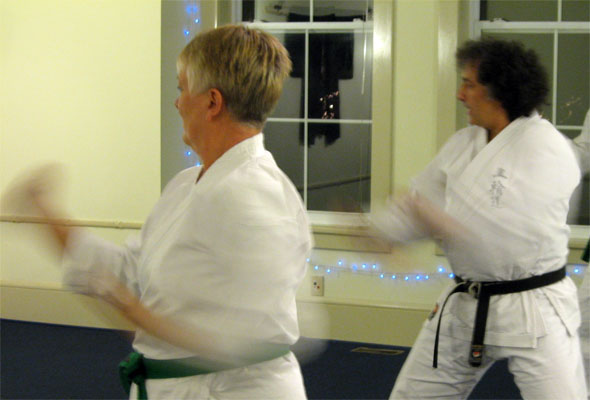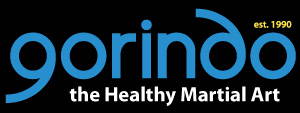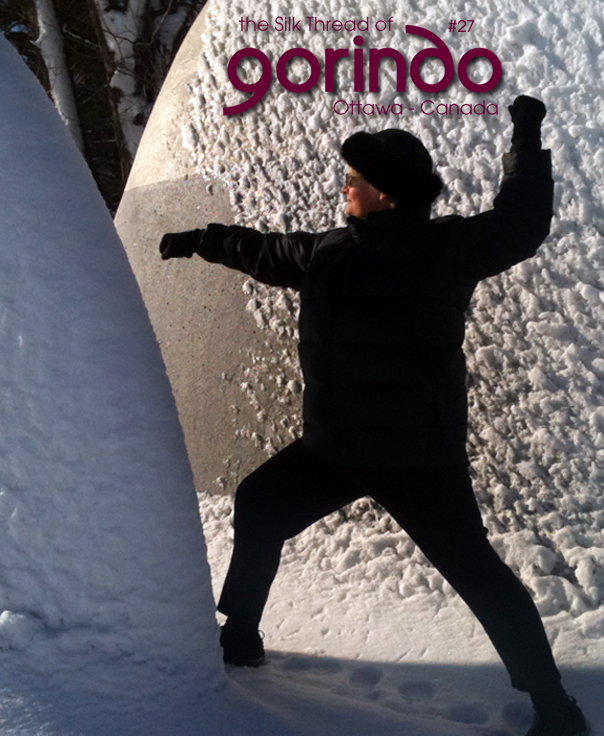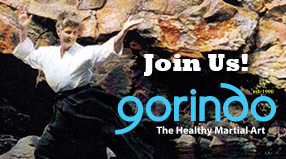The Silk Thread of Gorindo - Ottawa - Canada
Issue 27
- The Process of Teaching (Part 2)
- Kihon - Basic Level Practice
Cover Roxanne Standefer 'Soto-uke' - Photo by ©2013 Claudio Iedwab
The Process of Teaching (Part 2)
< read Part 1 (previous issue)

What can be simple for some, may be perceived as complicated by others. The educational experience will set the standards to “decode” the context of possible interpretations of subjects and tasks, translating them into a simple and gradual technical execution.
The experiences of childhood, as well as those of the scholastic years and adult life (social and/or in working relations) mark their presence in what and how we learn. The teacher will have to respect the privacy and individuality of the students. He will need to accumulate the necessary experience to know when predetermined limiting factors will have to be modified during the process of learning.
The art of physical movement affects the learning of martial art techniques as it opens the senses of seeing, hearing, touching and body awareness, relating the person toward others and the surrounding in a predominantly physical way.
For example, in certain situations the teacher will explain a technique with meticulous detail and she may even demonstrate it in a precise way, but surprisingly, more than one student will not be able to integrate or understand such presentation. A “visual description” that will allow the student “self observation” of his own body during the execution of the technique, will hit its mark, even though the teacher physically does not demonstrate the action. Visualization can initiate the mental process that will lead to the physical expression of the movement.
Unconscious factors can create the inability to accept mistakes, even though the student consciously accepts the status of beginner before the expert eyes of the teacher. This attitude of acceptance is fundamental during learning and technical execution in the Martial Art.
The Instructor will avoid the excessive (and obsessive) observation of details, although they may seem important. The health and integrity of the student are the only priorities that will guide the immediate corrections. The rest of the observations will be made gradually and progressively, without deficiency in the quality of attention or dedication from the student and the professor.
Drastic changes can compromise the mechanical integrity of muscular systems and articulation of joints as well as the necessary mental integration. Corrections made in this manner sometimes lack “staying power” and the error will often recur in the next session.
The normal learning curve displays long periods of “stagnation”: maturation plateaus in which the student thinks that he is not learning or improving. The significance of this process is that it is in fact during this period when the basis for the next advancement and development is laid down. When real improvement becomes apparent it is only the elaboration and resulting expression of this stage. Without doubt, such plateaus may result in personal frustration and disappointment if they are not understood as part of the process of learning.
It is important that the teacher and the student, keep in mind that:
• Everyone is different and therefore so will the education methods that work for each individual.
• Everyone can improve even though they may have to follow different ways to arrive at a common point.
• Everyone can exercise changes in their physical, mental and emotional patterns.
• Neither age, nor sex, are impediments or determining factors in the process of learning.
To be continued...
Excerpt from the Course "Teaching Martial Arts - The Gorindo Way" by Claudio Iedwab & Roxanne Standefer
© 2011 Photo by Roxanne Standefer
Issue 27
- The Process of Teaching (Part 2)
- Kihon - Basic Level Practice
« Click the Subscribe link on the left





